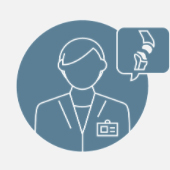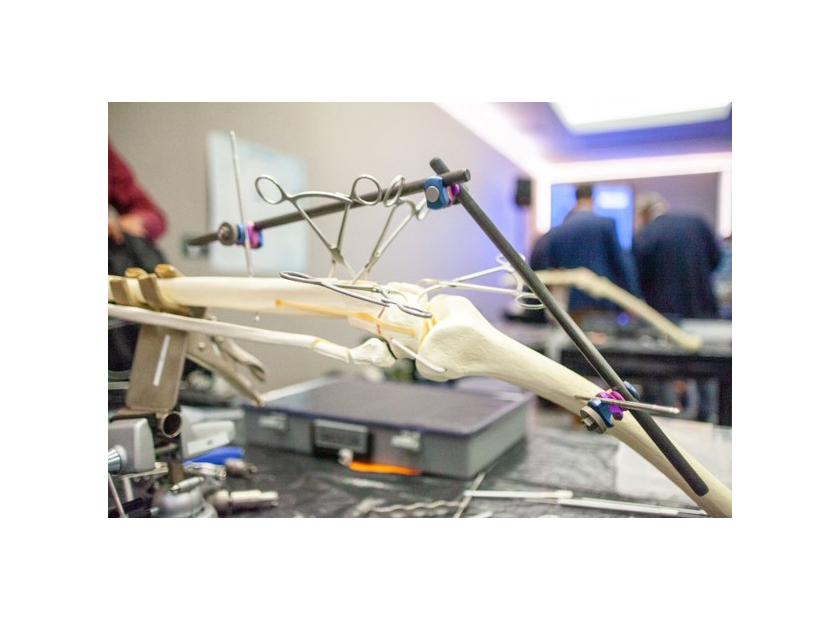Disposable Bone Models Make Training More Interactive While Keeping Costs Low
Disposable bone models are the cost-effective, hands-on solution to providing a rapidly growing post-COVID US medical student cohort with interactive instruction that accelerates the transfer of skills to the operating room.
With the number of students enrolling in medical schools jumping by almost 20% for the 2021 academic year, it can be expected that the need for hands-on medical training resources will also grow. The durability, versatility, authenticity, and interactive features of today’s disposable bone models make them a viable and cost-effective choice ahead of both the traditional cadaveric model and the use of digital simulations.
The appeal of disposable bones models is further enhanced by the fact they can be purpose-built to suit the exact needs of increasingly populated courses and pre-clinical settings.
Disposable Bone Models as a COVID Alternative
The increasing student numbers reported in 2020/2021 potentially place greater strain on medical school resources already being challenged by the impacts of COVID-19. In March of 2020, for the first time in history, the Association of American Medical Colleges recommended that all clinical rotations cease. That ban highlighted the drawbacks of the established “see one, do one, teach one” model that relies heavily on placing inexperienced students in real-world settings and increasing patient risk.
The conditions of the pandemic forced students away from attending medical schools altogether, reducing the reliance on clinical settings and requiring immense learning adaptation. Research already suggests that hands-on medical instruction is more engaging, effective, and better able to facilitate the transition of core skills to clinical settings than more passive delivery. This incentive to provide practical, hands-on experience in a non-clinical setting leaves educators three clear choices:
- Disposable bone models
- Cadaveric specimens
- Digital models
Of the three, only disposable models offer a combination of low cost, low maintenance, reuse, tactile response, and customization. The advances of modern disposable bone models make them a practical and effective progression from the pre-COVID reliance on in situ education.
Cost-effective and Customized
Around 20,000 Americans donate their body to medical science each year. While these donations come with a benevolent intention, the brokers involved in selling the cadavers to medical schools can charge up to $10,000 for a specimen. The finite number and relatively high cost of these models at a time of increasing cohort numbers, in addition to the strict government regulations schools must follow in storing and disposing cadavers, can make them far less appealing than disposable models that retail at a fraction of the cost and are readily manufactured.
Other further cadaver issues include limitations on repeated use, presentations that skew toward older specimens, and a state of decay that does not accurately reflect the performance of living tissue. While some brokers can supply specific parts of anatomy, cadavers cannot be relied upon to recreate conditions or presentations that are unique to a medical course, in the manner of customized disposable bone models.
Disposable models aren’t the only means of producing customizable teaching resources, but they don’t require the classroom conversions of the digital alternative.
Hands-on and Practical
The immediate impact of COVID-19 restrictions on medical education was the transition of continuing lessons to online delivery. The need to socially isolate only accelerated the evolution of many leading medical schools away from the use of biological teaching resources—NYU School of Medicine and Cape Western Reserve, for example, had already begun replacing cadavers with digital alternatives.
The use of virtual and augmented reality as hands-on instruction, however, does not yet deliver the same tactile response as disposable bone models. Setting up a suitable digital lab that can accommodate an increasing cohort also presents problems, and the visual rather than physical basis of such technologies presents an equal challenge. Students can engage with 3D simulations of advanced techniques, such as arthroscopy, but the digital representation is a step removed from the tactile performance of disposable models.
The advantage the leading arthroscopy models possess over digital simulations is repeated across the range of specialization training. That is, only engineered models captured both the tactile response of human anatomy, and the reusable, practical benefits of simulation.
Advanced Features and Feedback
The latest generation of engineered disposable bone models are equipped with dynamic features that leverage their relative low cost toward more effective teaching resources. Produced in partnership with leading teaching professionals, these models are robust, reusable, dynamic, and fully customizable. The defining features include:
Model expansion |
Instructors can alter models in response to the improving technical abilities of their students, radically improving the lifespan of models across cohorts. |
Dual usage |
The ability for models to be actioned in both open and closed settings to encourage the mastery of a range of techniques. |
Haptic feedback |
The realistic feel and response you get when cutting or drilling different bone models, such as cortical versus cancellous, provide immediate stakes to simulated procedures. |
Radiopaque materials |
Such materials block radiation and enable advanced medical imaging use for surgical and treatment triangulation, or as a pure diagnostic tool. |
These features allow disposable bone models to provide an engaging, effective training environment while reducing expenditure both through initial cost, ease of setup, and a long shelf life.
Importantly, these leading features can be fully customized to deliver against unique goals not accommodated by other options.
Create Your Own Disposable Bone Models
The rise in student numbers experienced in 2021 is going to result in increased demands on the resources of institutions already dealing with the lingering impact of COVID-19. This demand could result in a need for more targeted resources that directly deliver against specific course goals. The potential for educators to collaborate with medical training model engineers in the pursuit of such precise resources offers a potential solution.
With the right partnership, the instruction of any specialization, practice, or procedure can be improved through hands-on engagement with tools custom-designed to not only authentically complete the task but do so in a manner that can be cost-effectively reused into the future.
The hands-on models created by Sawboneswill make your lessons and your student interactions more significant and impactful. For more information on our offerings or to talk about custom training models, contact us at 206-463-5551.

If you're seeking something you can't find on our website, our sales team is happy to help. We can either direct you to the right model or provide a free quote on the right custom project to meet your needs. Discover options with our clear bone models, laminated blocks, custom displays, or other machining projects.








